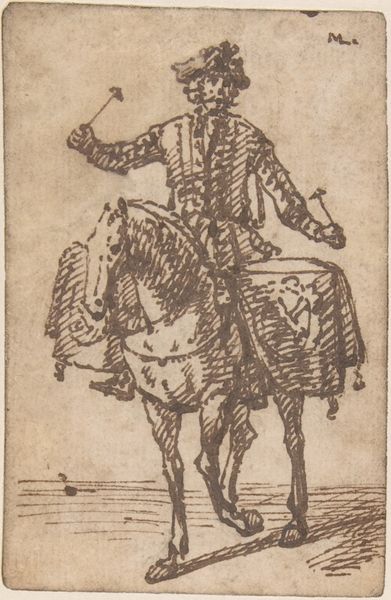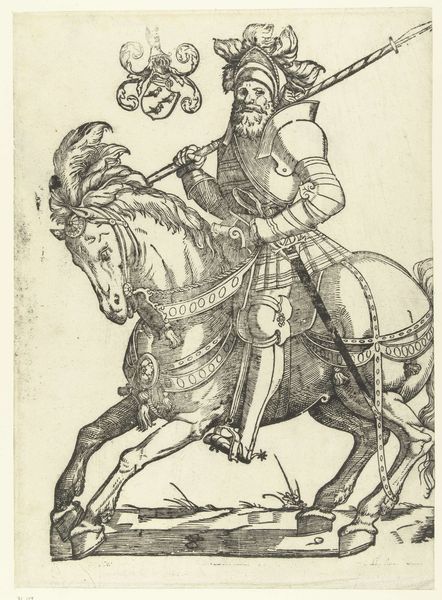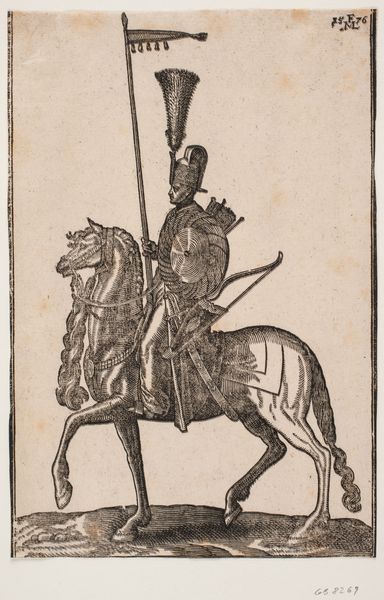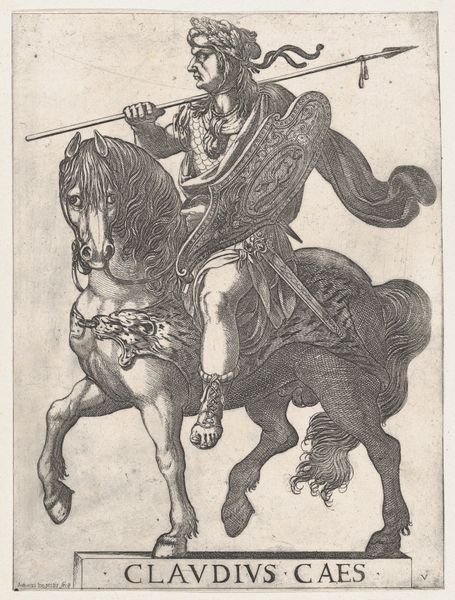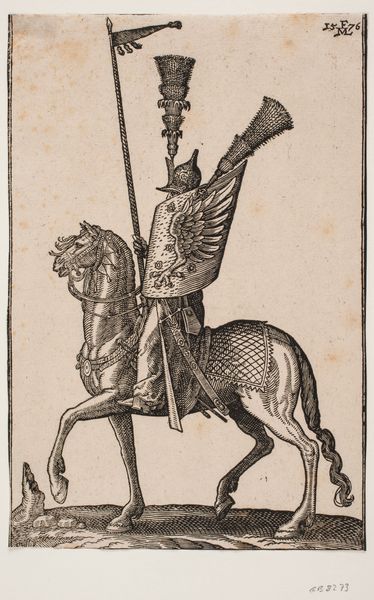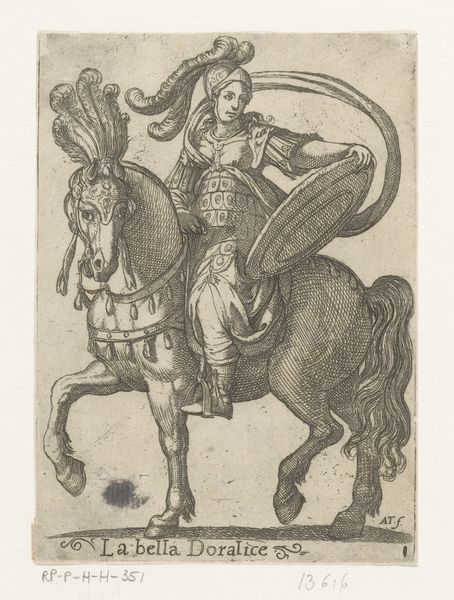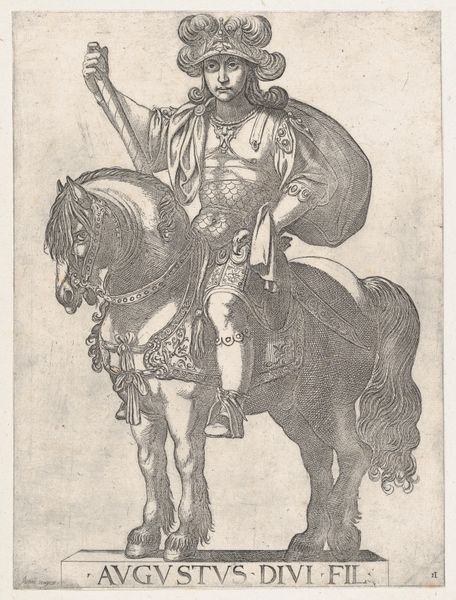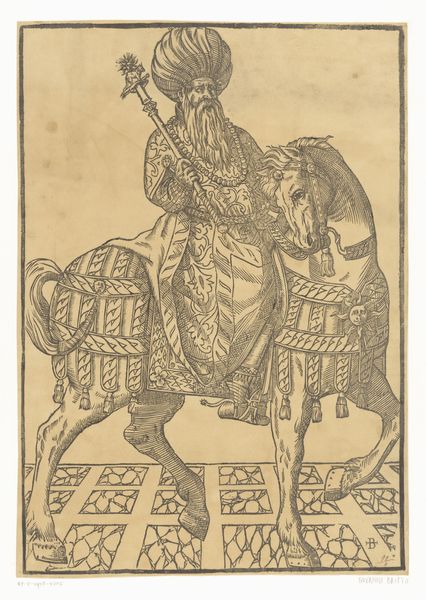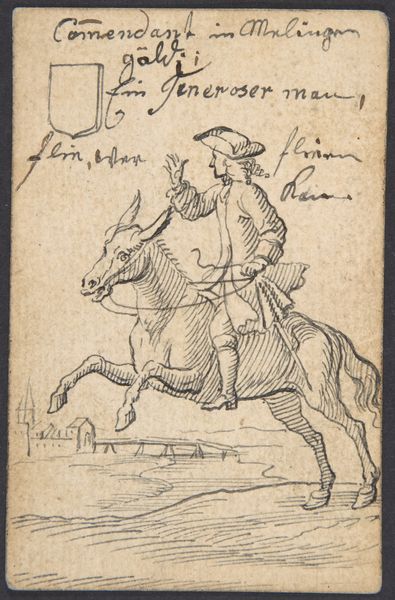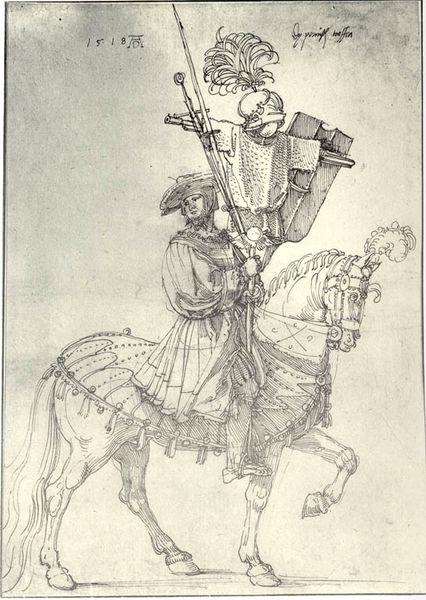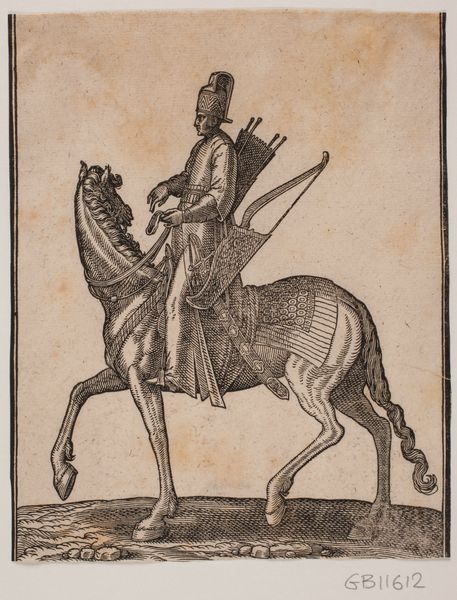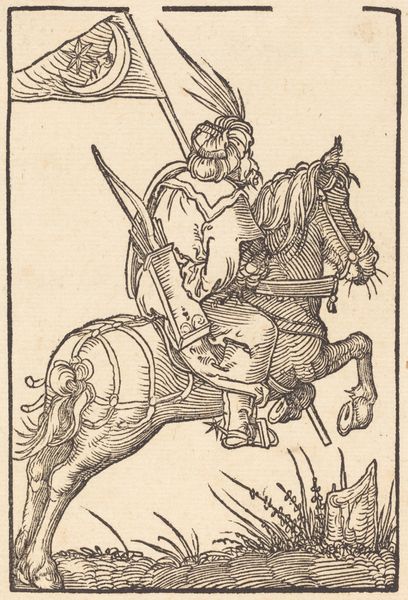
A Mounted Drummer from the Back 1670 - 1702
0:00
0:00
drawing, paper, ink
#
portrait
#
drawing
#
baroque
#
figuration
#
paper
#
ink
#
horse
#
men
#
genre-painting
#
history-painting
Dimensions: sheet: 3 7/16 x 2 1/4 in. (8.8 x 5.7 cm)
Copyright: Public Domain
Editor: Here we have Marcellus Laroon the Elder's "A Mounted Drummer from the Back," created sometime between 1670 and 1702, using ink on paper. It feels like a study of a character, quickly sketched. What do you see in this piece? Curator: Immediately, I’m drawn to consider this image through the lens of power and performance. We see this drummer, part of the military apparatus, yes, but also deeply embedded within performative aspects of baroque court life. What does it mean to depict him from the back? Is this a deliberate choice to diminish his individual importance, highlighting instead his function within a larger system? How do we interpret his role within the structures of 17th century social and political power? Editor: So, it’s less about him as a person, and more about what he represents in that societal context? Curator: Exactly. The military wasn't just about warfare; it was a spectacle, a tool for projecting authority. The drummer provides the rhythm, dictating the pace. But who is setting *his* pace? Laroon’s image becomes interesting as it indirectly comments on this tension and how the individual becomes enmeshed within institutions. It begs the question: how much agency did such figures truly possess, and what impact did the performance of these roles have on shaping personal identity within an oppressive environment? The depiction of genre is thus deeply linked to history and politics. Editor: That’s a very different take than just seeing it as a historical costume study. I’m thinking about it completely differently now. Curator: That's the beauty of art! By examining social and political elements in art and visual culture, we start to address questions of race, class, and gender. This little sketch suddenly carries far more significance. Editor: I see that now. Thank you! It really puts the artwork into a wider, historical, and sociological context.
Comments
No comments
Be the first to comment and join the conversation on the ultimate creative platform.
